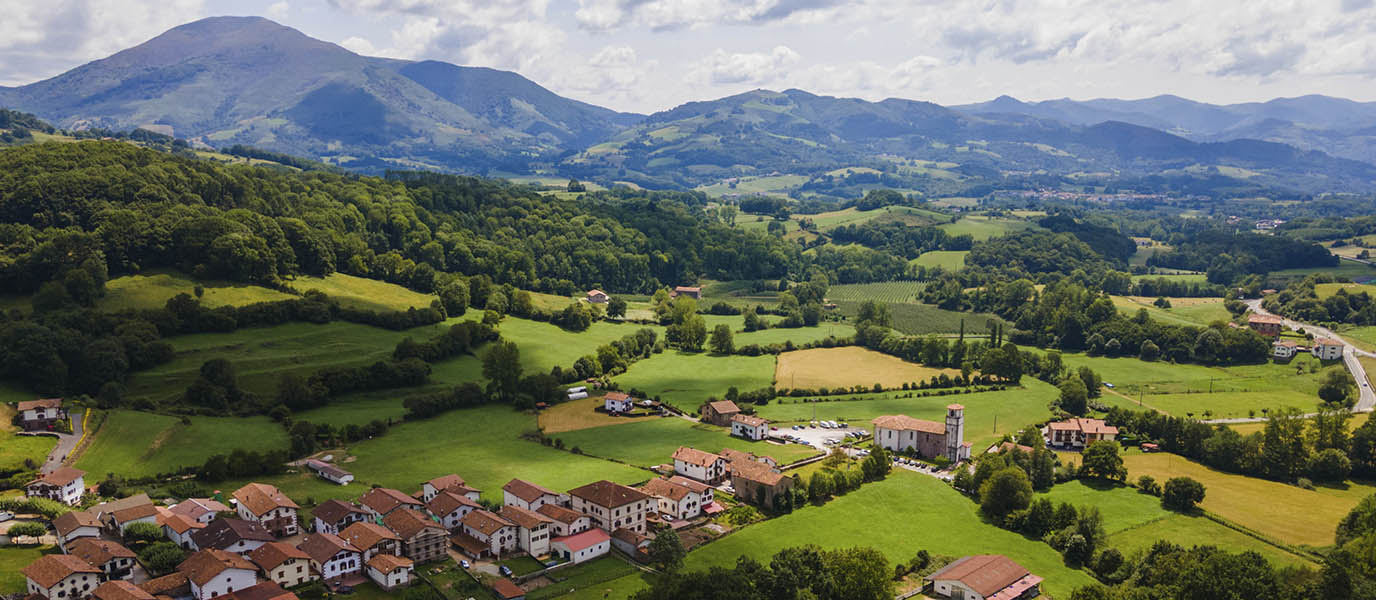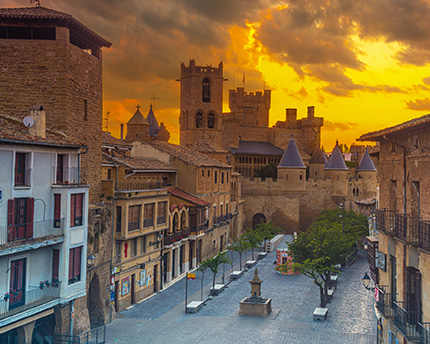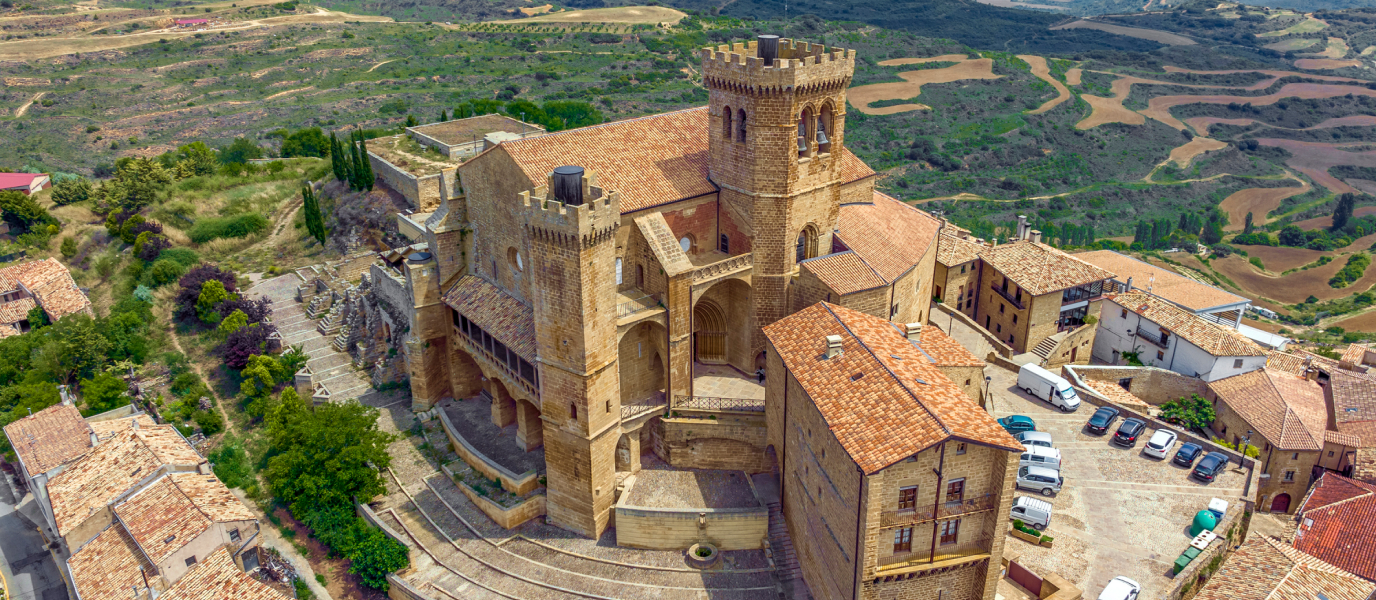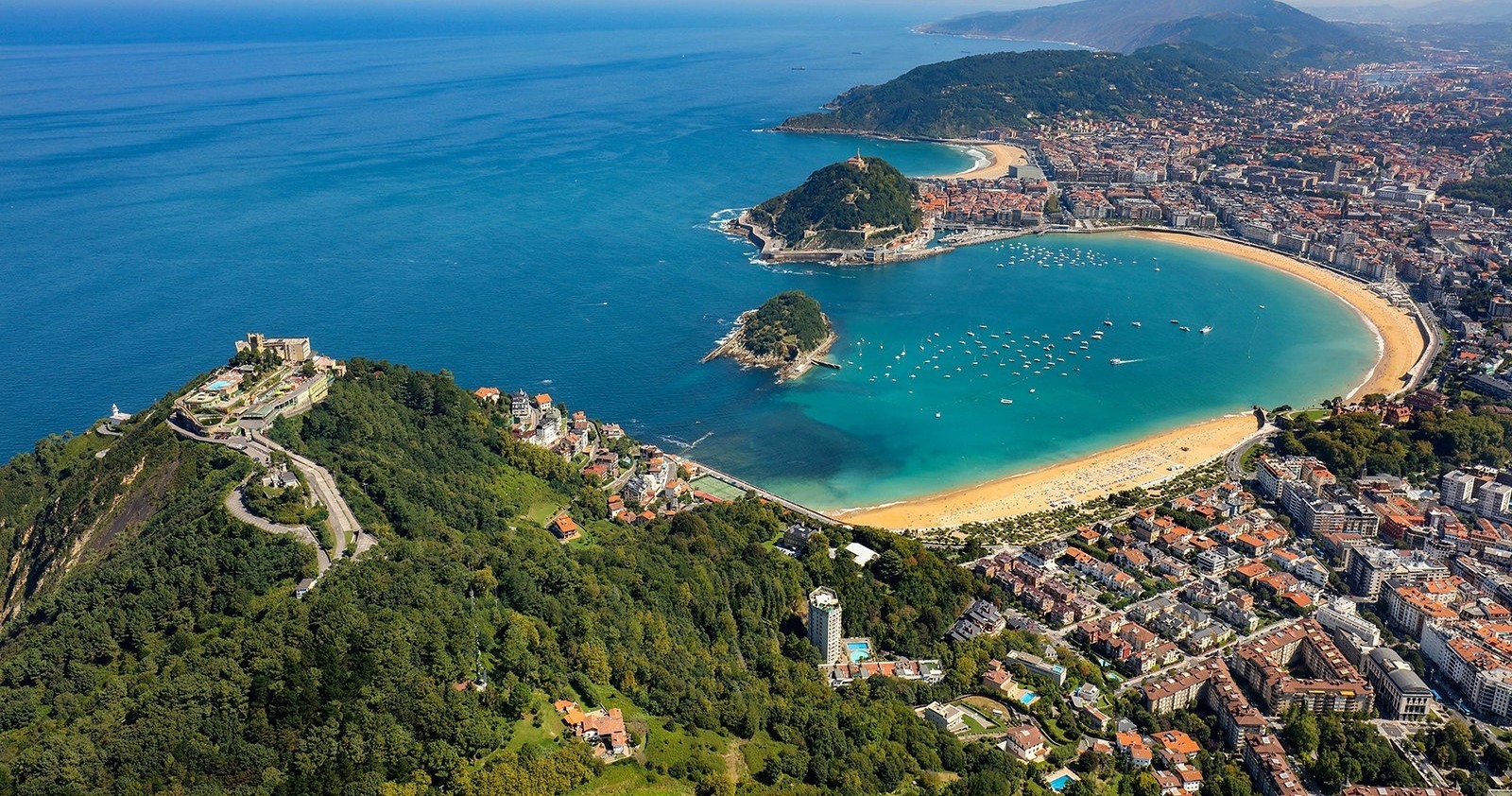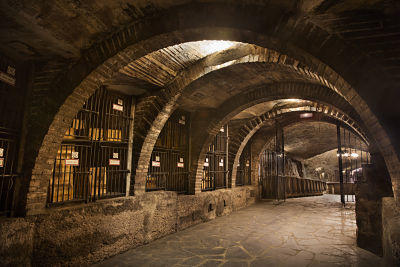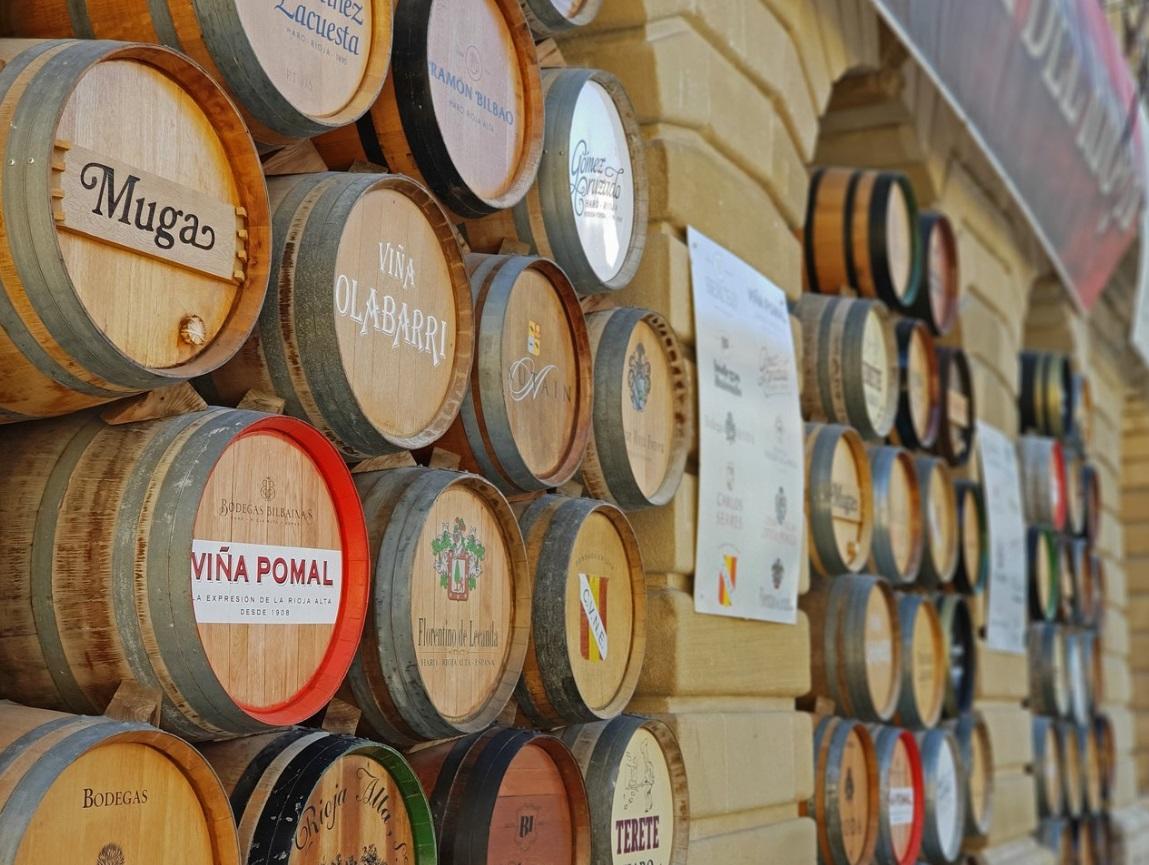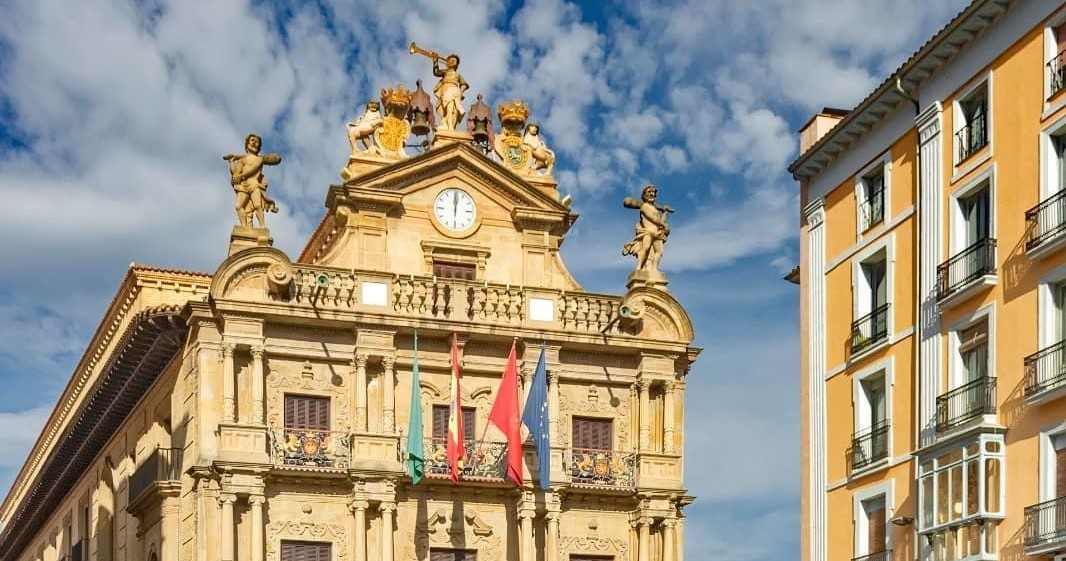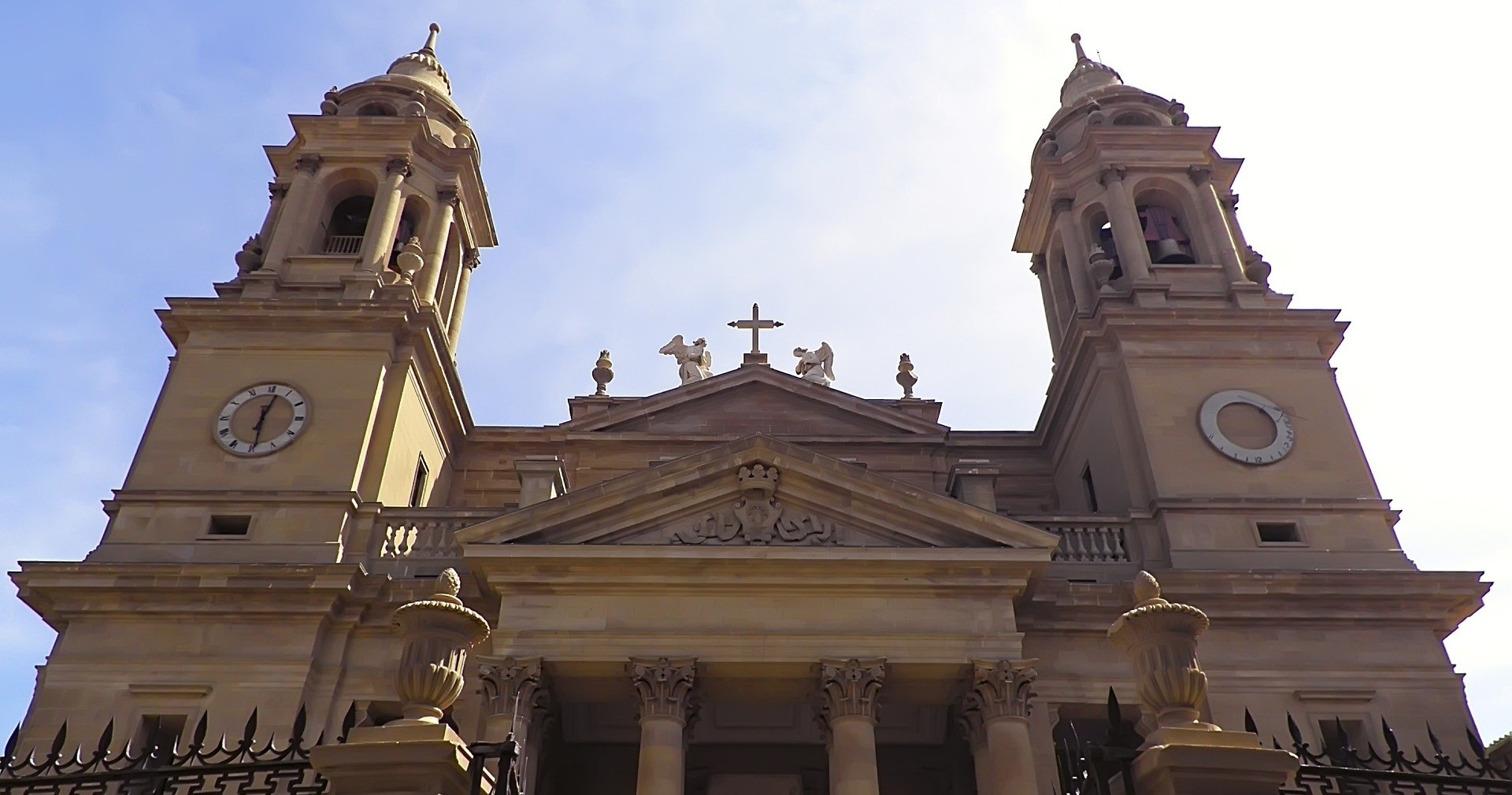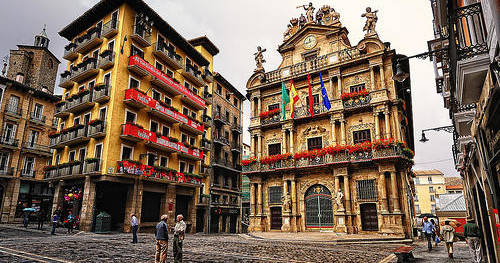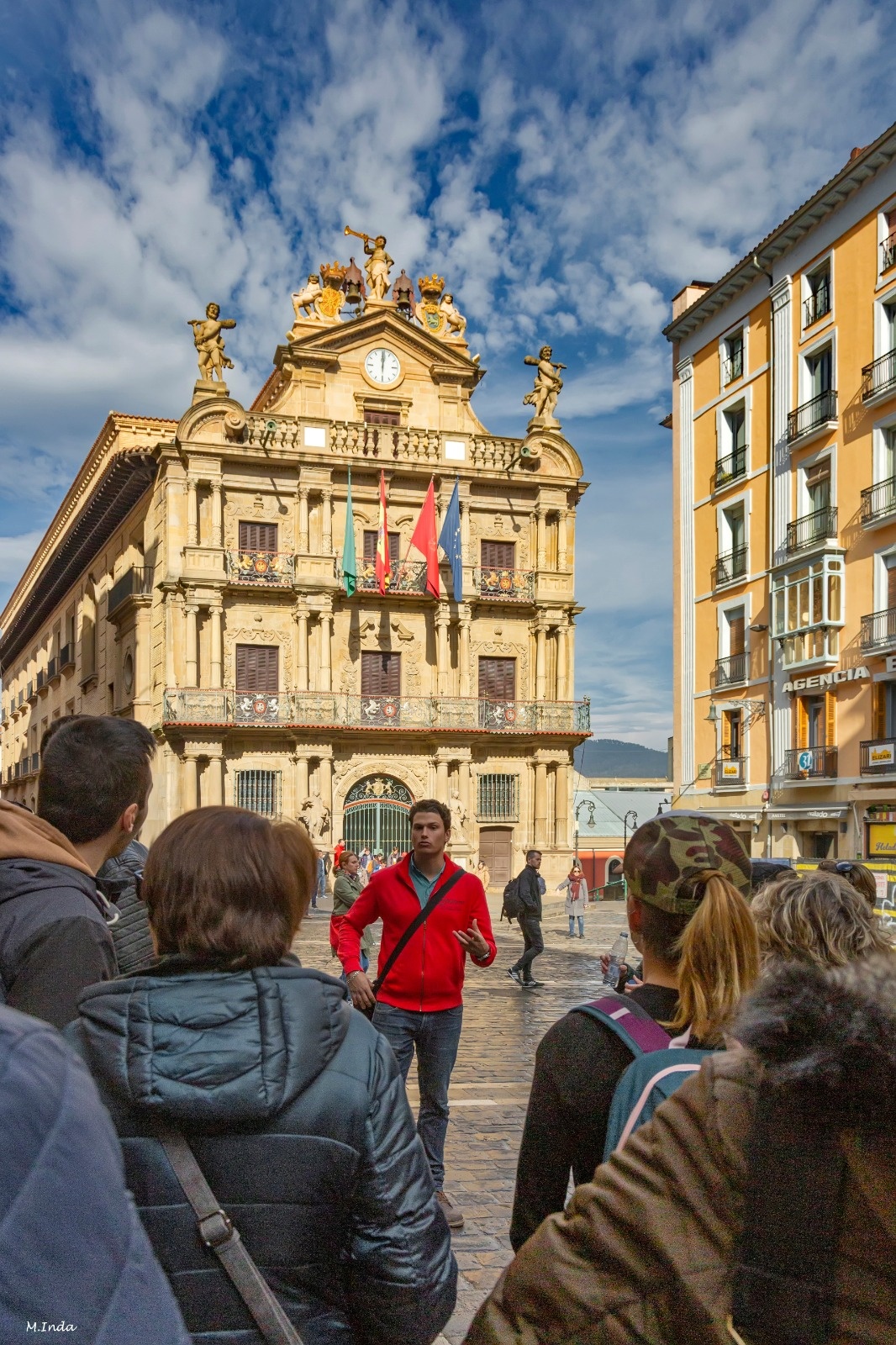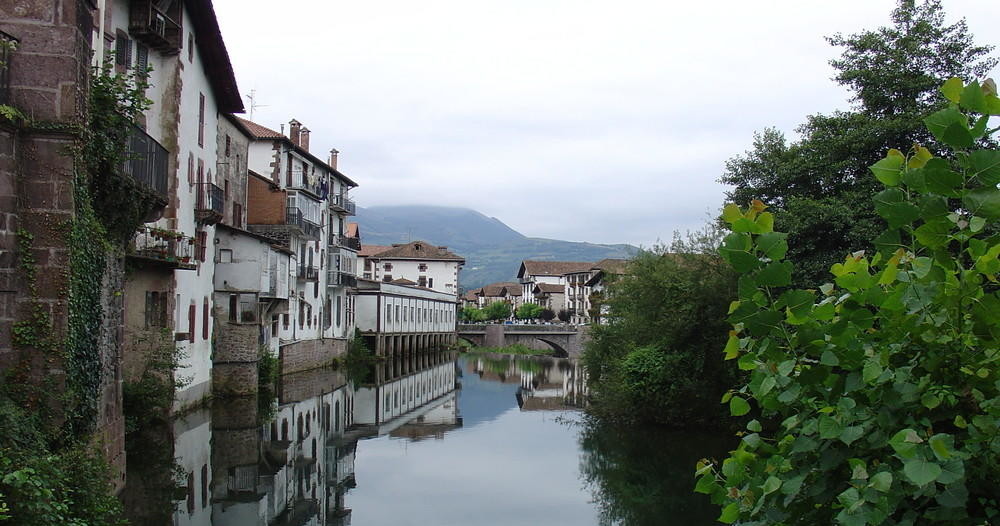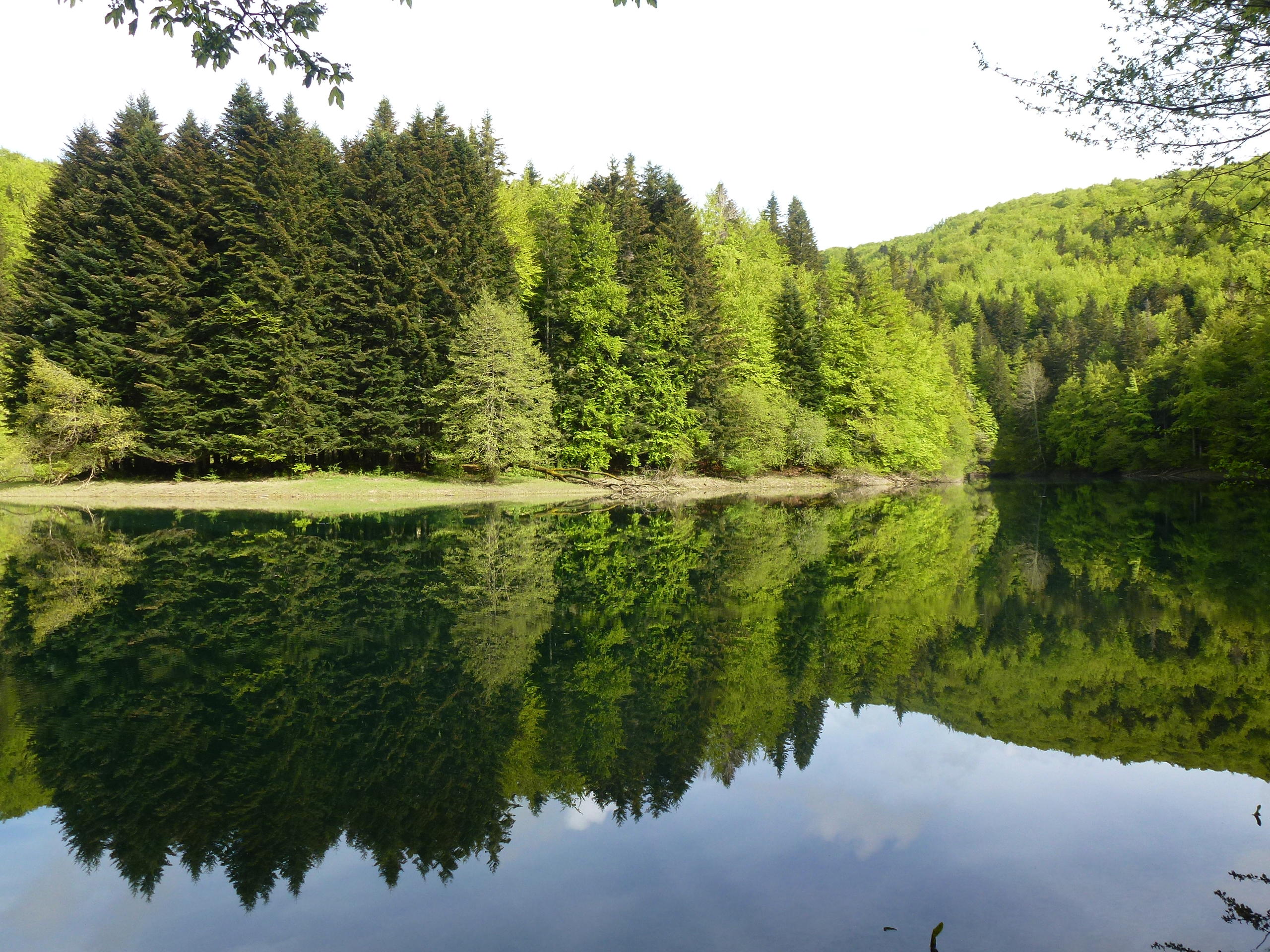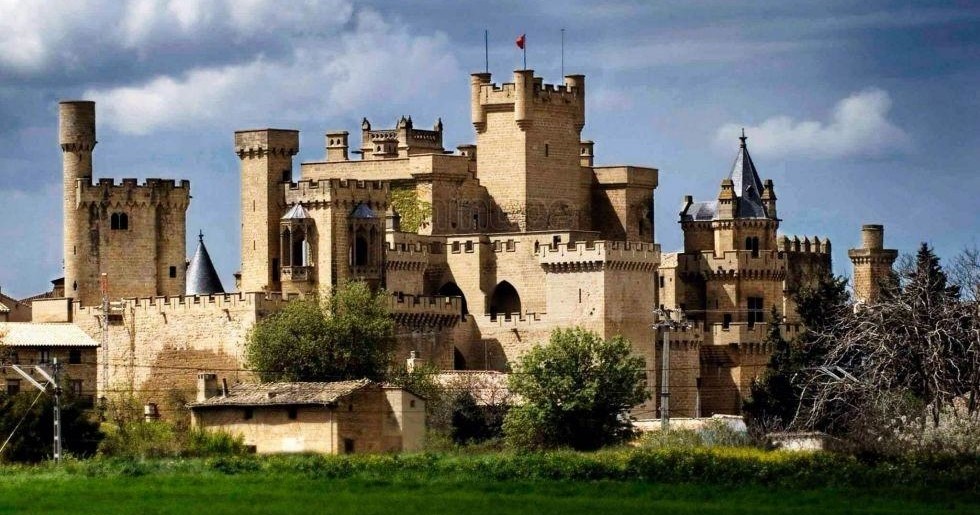Rolling hills, green fields, grazing cows, crystal-clear streams, stone hamlets… You will find all these in the Valle del Baztán, where Nature imbues everything. Here, the Basajaun, the legendary lord of the woods, permeates the area’s scenery, its folklore, its traditions, its gastronomy and its festivals. We should also mention the hospitable people of this valley in the Atlantic Pyrenees, an artistic culture that was brought from afar, and the gastronomy that is one of its principal assets. An area very close to France and to the Cantabrian Sea, which certainly deserves to be a tourist destination.
The Valle del Baztán has a plethora of attractions spread across the municipalities that comprise it. We’re talking about the lovely villages of Elizondo, Ziga and Maya, not forgetting remarkable natural beauty spots such as the Xorroxin Waterfall, the Zugarramurdi Cave, the Urdazubi Caves, and the Señorío de Bertiz Natural Park. Nor must we forget the region’s traditional festivals, such as the great brotherhood festival of the valley’s villages, known as the Baztandarren Biltzarra.
The natural landscape
The Valle del Baztán, “Navarre’s Switzerland”, is a gift of nature in its purest state. It lies in the north of Navarre, in the foothills of the Pyrenees, and is famous for its idyllic scenery, its hamlets and villages, and its age-old culture. They also say that this is the cradle of Euskera, the Basque language. Among the treasures visitors will find here are extensive beech forests, rugged crests, convoluted gorges, crystal streams… and all within an area of 377 kilometres, with a population of around 8,000 people.
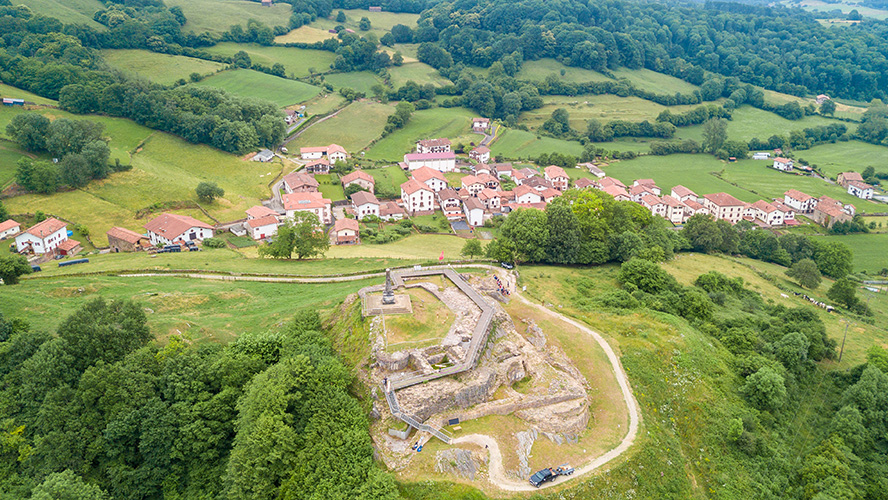
The Valle de Baztán is an open depression between the ancient massifs of Cinco Villas and Quinto Real. It is approximately 15 kilometres long, and between 1 and 3 kilometres wide. In terms of scenery, much of the Valle del Baztán is clothed in forest and other unspoilt, natural landscapes — despite the deforestation it has suffered over time. It is Navarre’s best-conserved forested area, after the Selva de Irati.
Nature The area’s flora and fauna
Animals we may see in the Valle de Baztán include roe deer, red deer, foxes and wild boar. The trout that inhabit the streams and rivers have suffered a great reduction in population due to the activities of heron and invasive coypu. It appears that the Valle de Baztán’s last bear was hunted down in a cornfield during the nineteenth century.
The valley has an abundance of oak trees, chestnut trees, hazel, ash trees, holly, birch and lime trees, as well as some conifers. At one time, the forests clothed the entire valley, but due to excessive felling and grazing, and the clearing of ferns, only about 44% of the area is now covered in trees.
Towns and villages to visit in the Valle del Baztán
The 15 settlements that make up the Valle del Baztán are grouped into four districts: Baztanoiza (Erratzu, Azpilikueta, Arizkun and Amaiur), Elizonto (Elizondo, Elbete and Lekaroz), Erberea (Irurita, Gartzain, Arraioz and Oronoz) and Basaburua (Ziga, Aniz, Berroeta and Almandoz). Of these, the towns and villages most popular with visitors are:
Elizondo
This is the administrative, legal and cultural capital of the Valle de Baztán, and is home to half of the total population of the valley. Calle de Jaime Urrutia, known as ‘the lower street’, is lined with stately façades and noble shields, like those you can see on the Palacio de Arizkunenea and on the Town Hall. Elizondo was the first town in Navarre to have street lighting. And in the year 1916, the Bidasoa Railway reached here, loaded with goods and passengers.
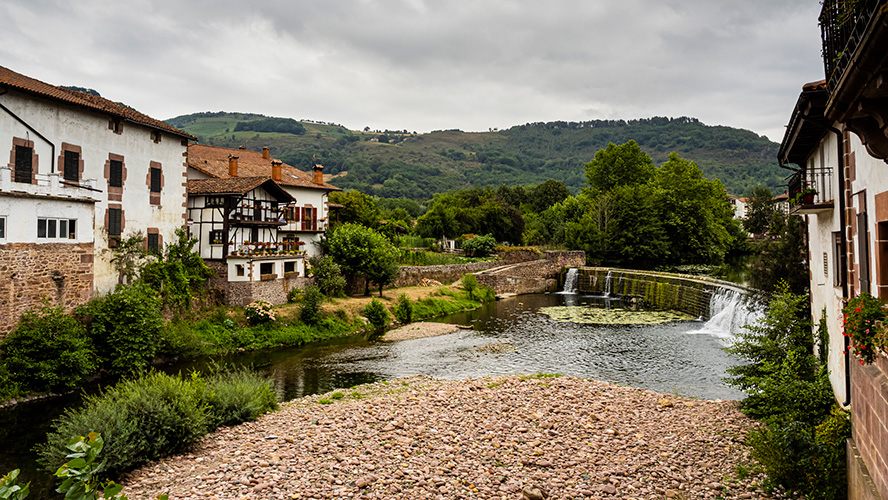
Ziga
The most striking feature of this attractive village in the Valle de Baztán is the impressive San Lorenzo church. Built on a hilltop, it seems to preside over the valley. It is known as the ‘cathedral of Baztán’, and is built in a Herrerian style. Nowadays, Ziga is a most attractive village.
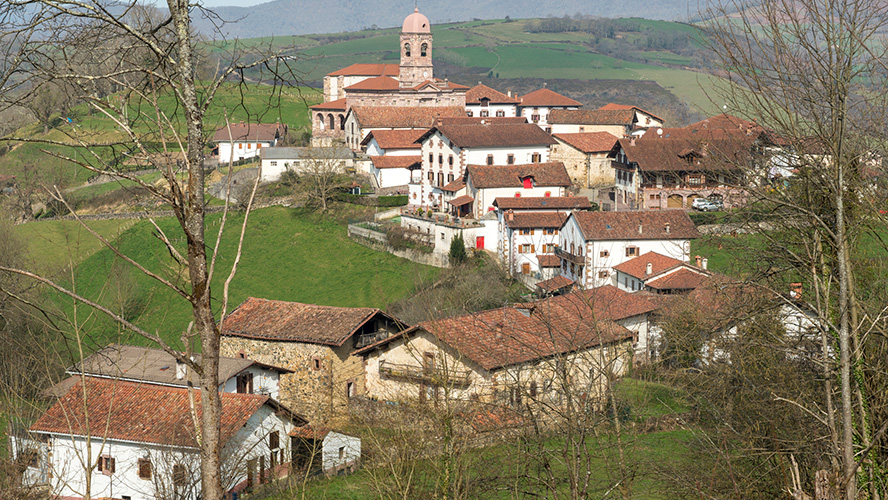
Amaiur
Lying 280 metres above sea level, and in the shelter of the Otsondo pass (602 metres) and of the Gorramendi massif, this pretty village was the last to join the Valle de Baztán’s political structure. That was in 1969: until then it had been an independent municipality. This is a typical example of a one-street village, as all its houses, mansions and palaces stand along its main street.
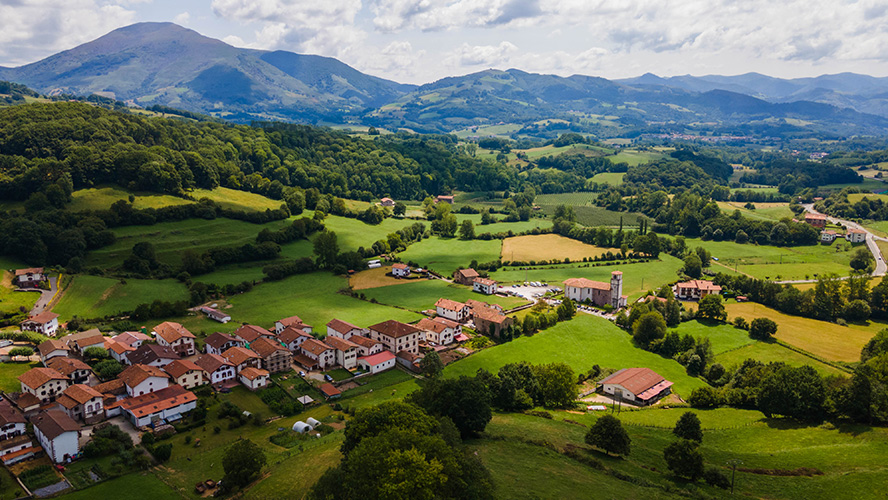
Other places to visit
Apart from its captivating villages, the Valle de Baztán has other great natural attractions, such as the Xorroxin Cascade, the Cave of Zugarramurdi, the Caves of Urdazubi, and the Señorío de Bertiz Natural Park.
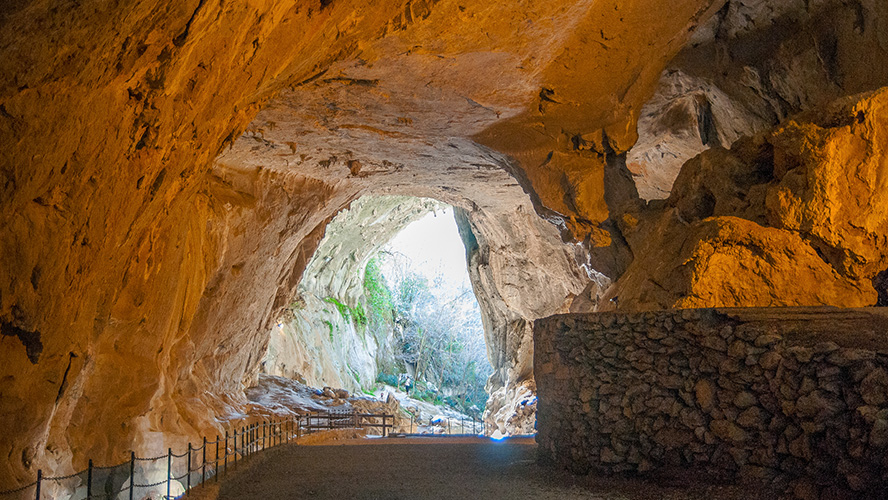
There are two lovely hiking trails through the Valle del Baztán, one of which will bring you from the village of Arizkun to the Xorroxin waterfalls. The other trail leads to the Leurtza reservoirs, where you can go up on to the hills to enjoy the spectacular views.
The gastronomy of the Valle del Baztán
The Valle del Baztán has close links to agriculture and livestock farming, so local suppliers guarantee excellent quality produce. Products derived from cow, sheep and pig farming are much prized here, in addition to vegetable and dairy products from the farms. Baztán’s best-known products are its cheese, curd cheese, trout, thalli, mushrooms, black puddings, game, patés, chestnuts and hurrekin egina chocolate with hazelnuts. The Valle de Baztán’s traditional dish is “txuri ta beltz”, which consists of two parts: the “txuri” (white element), a white pudding made with lamb tripe, parsley, garlic, eggs and salt, and the “beltz” (black element), a mixture of blood and onion.




































































